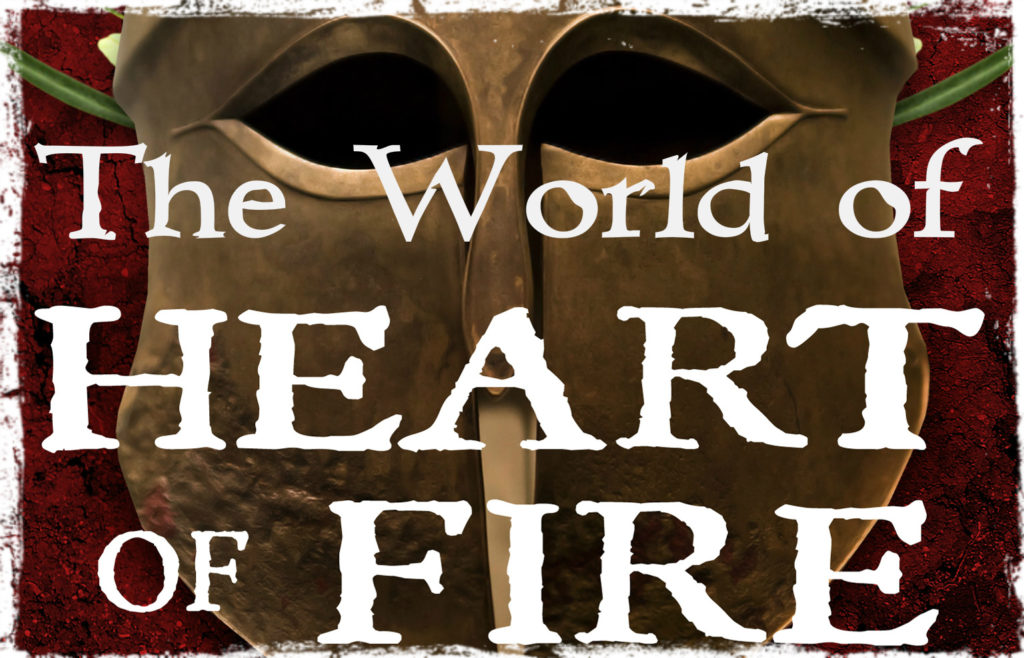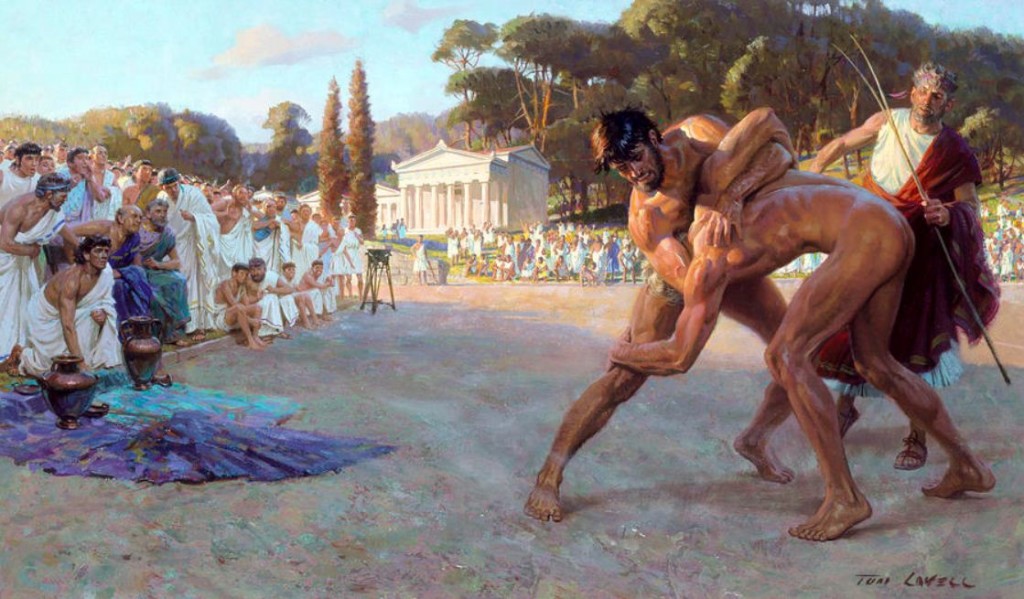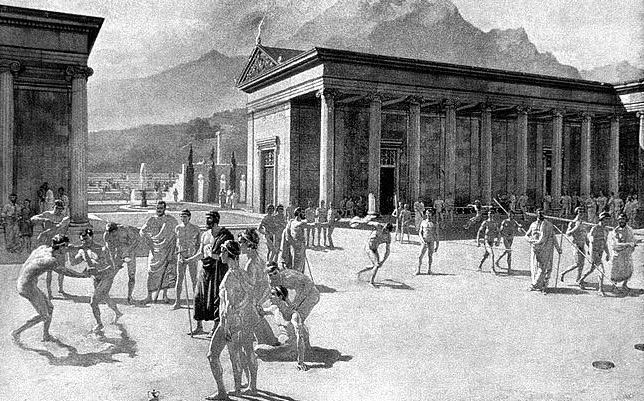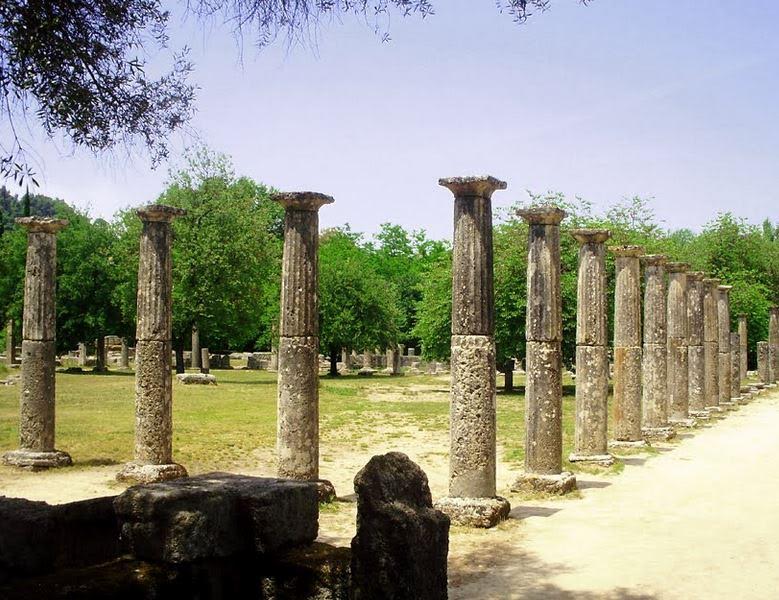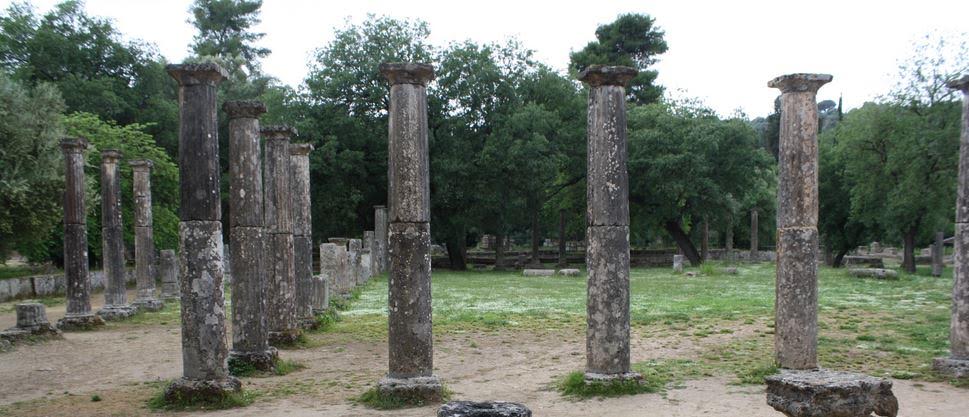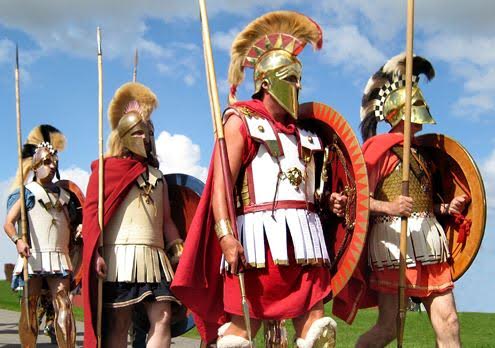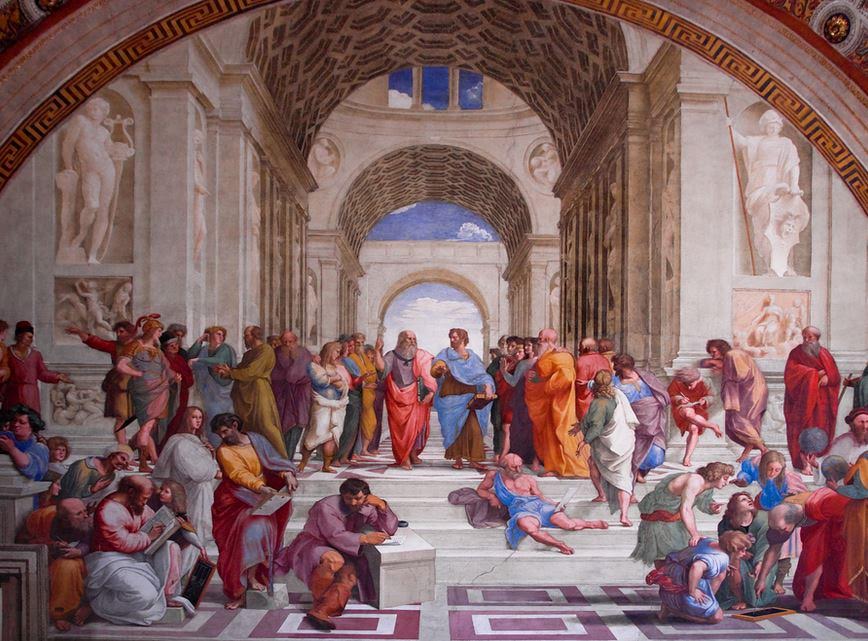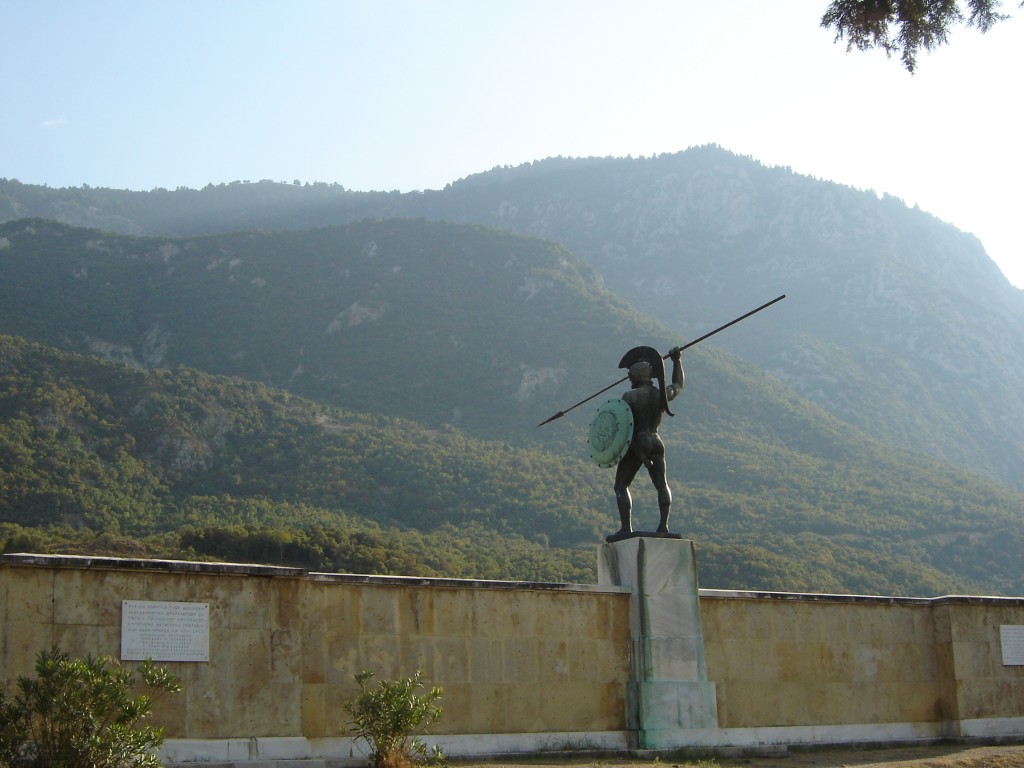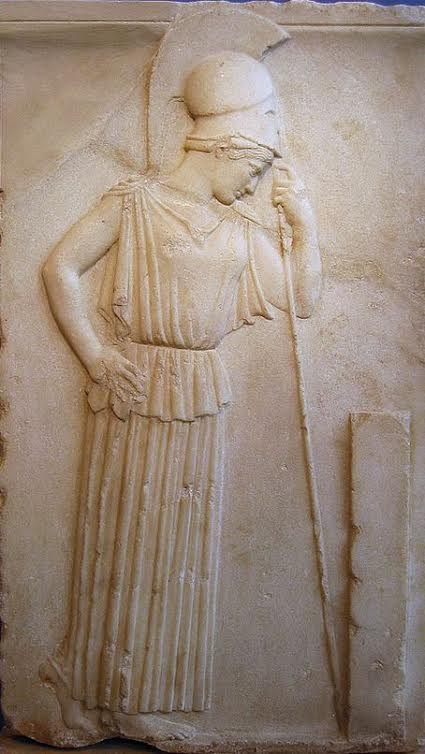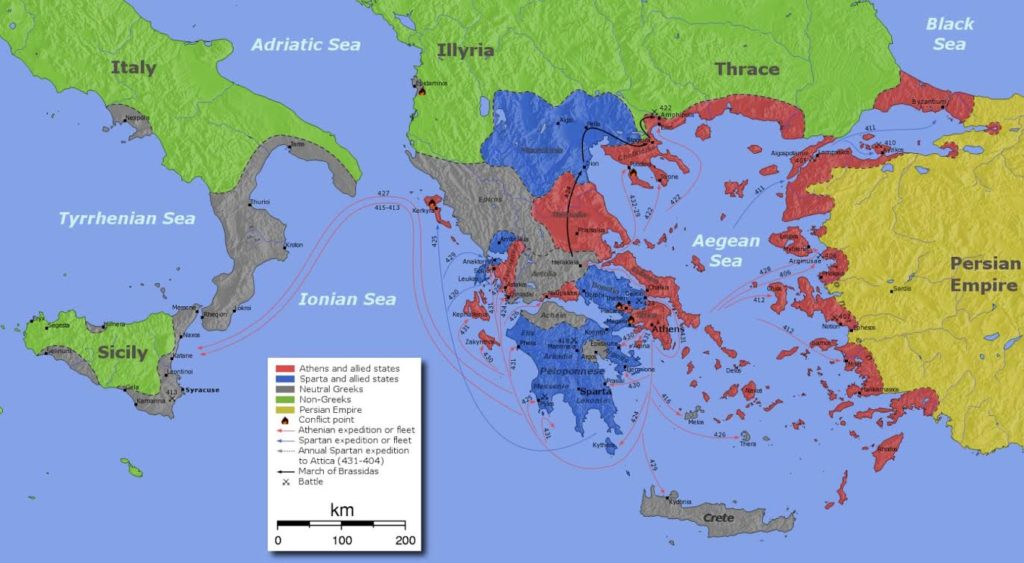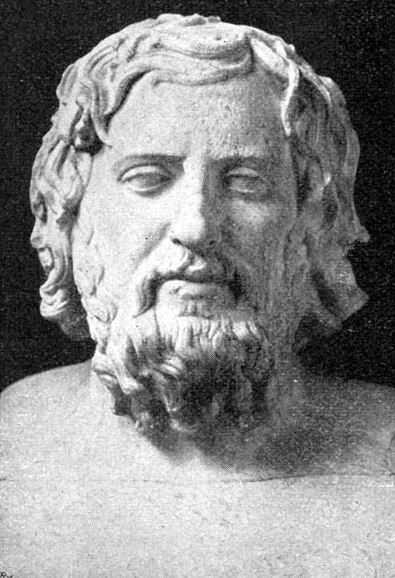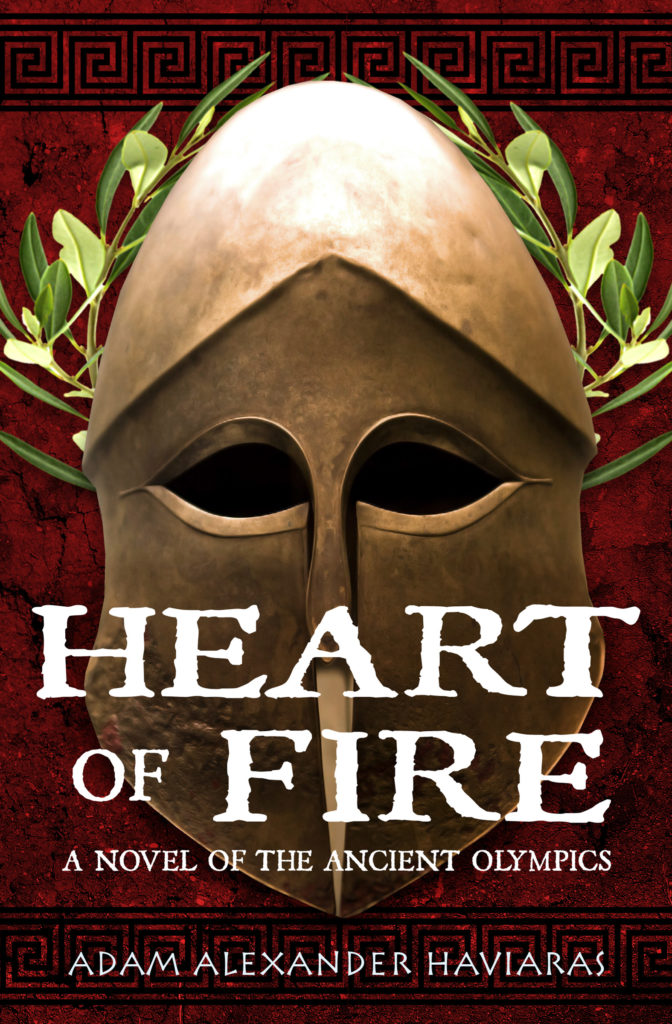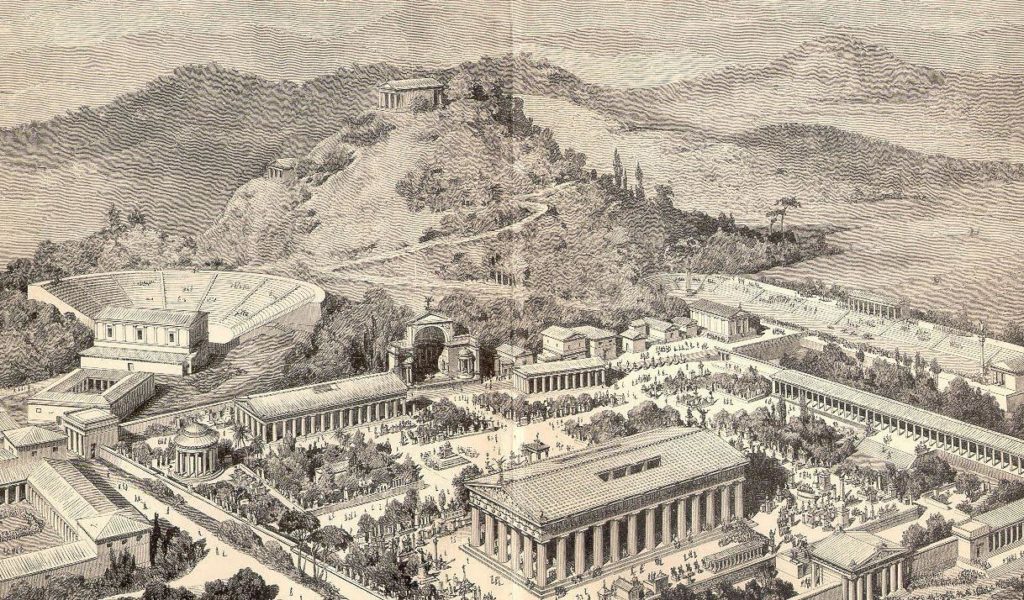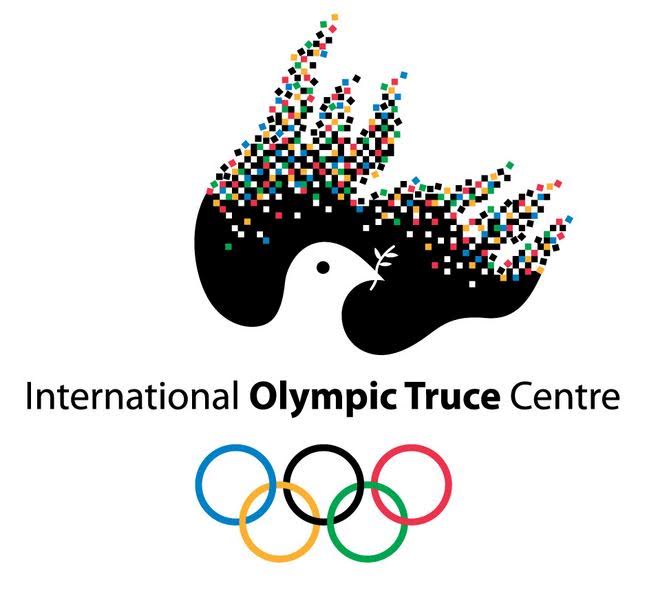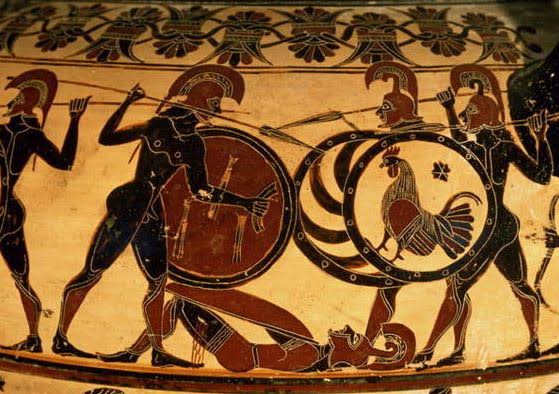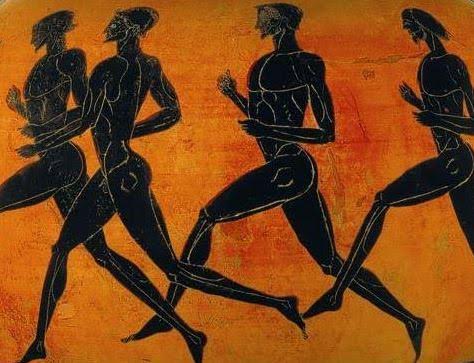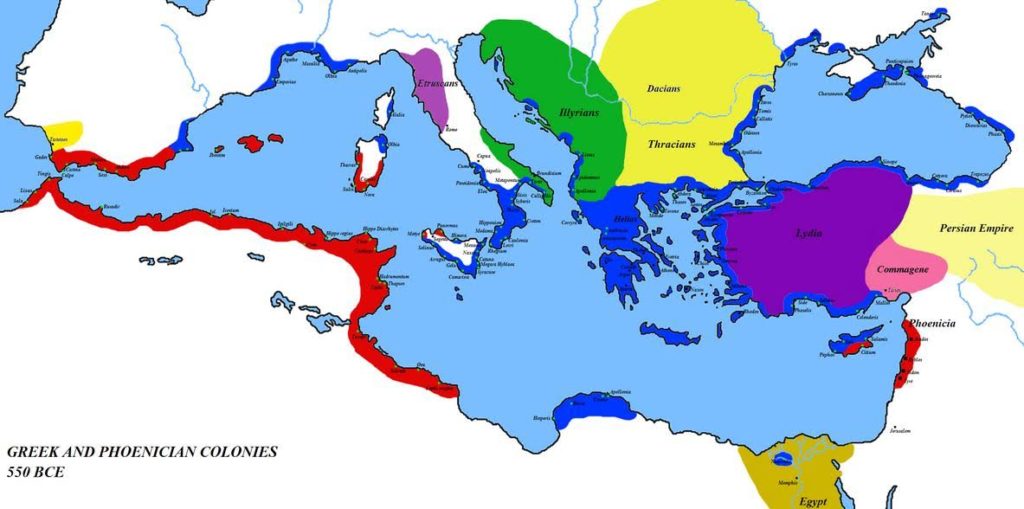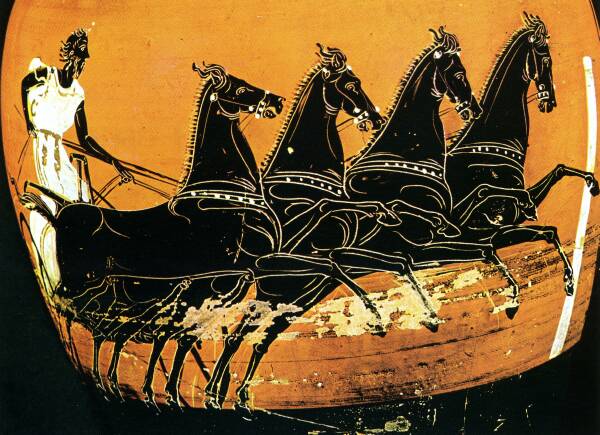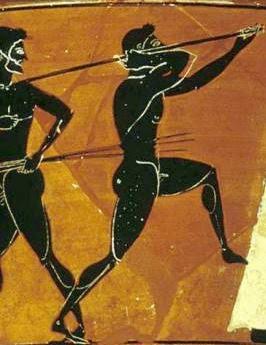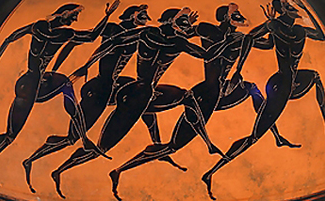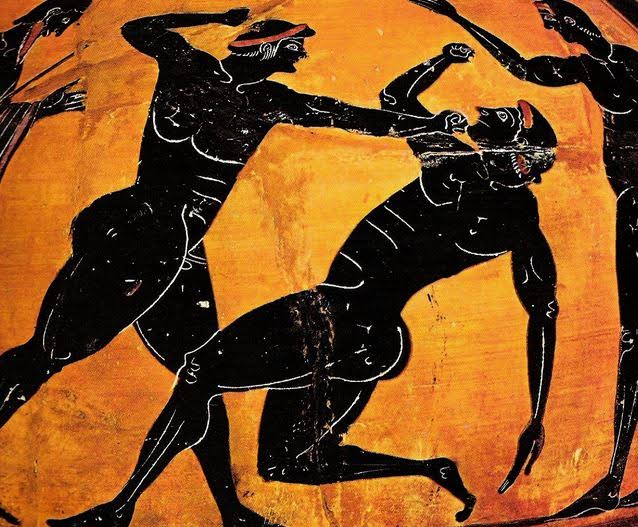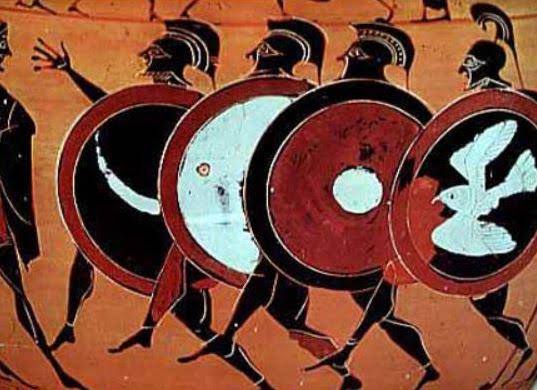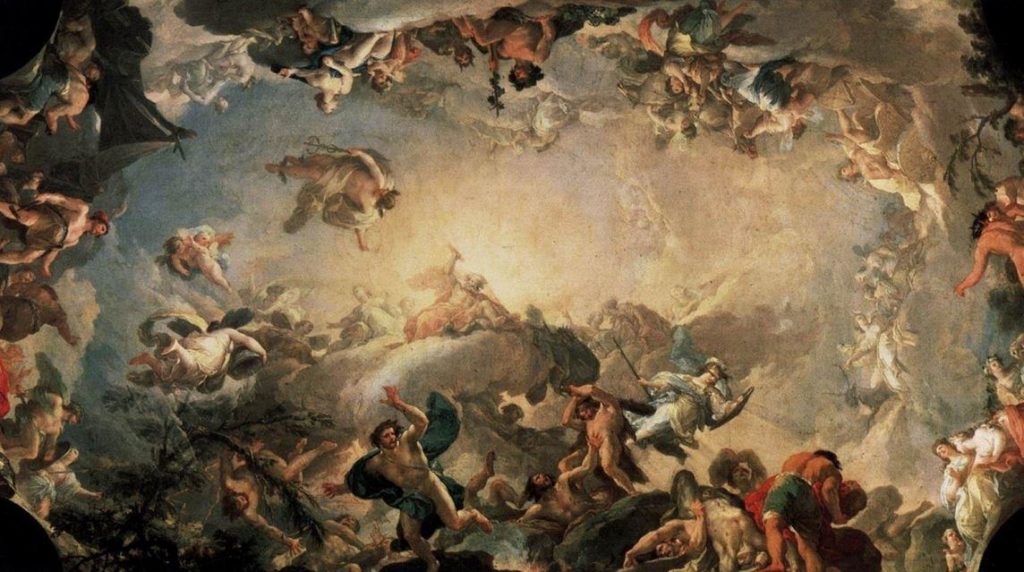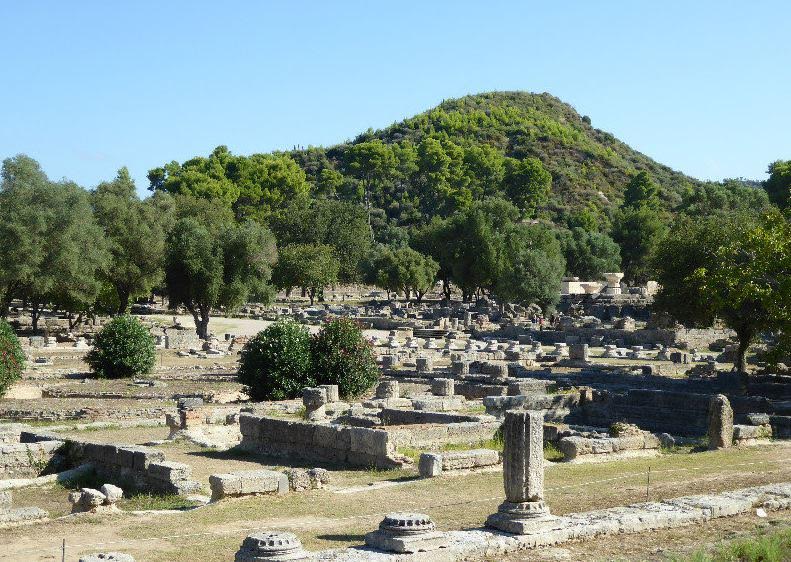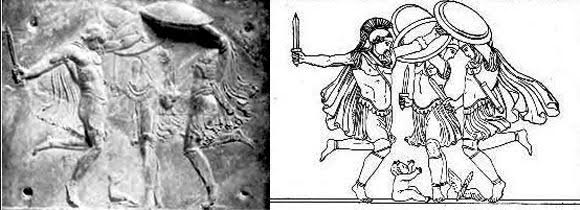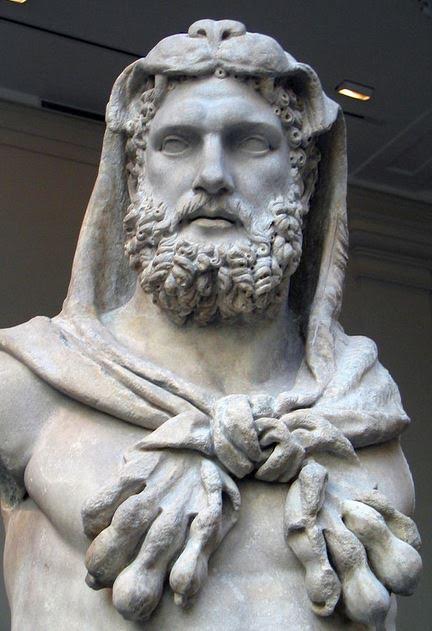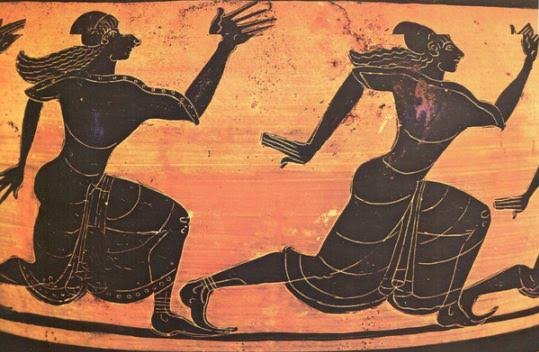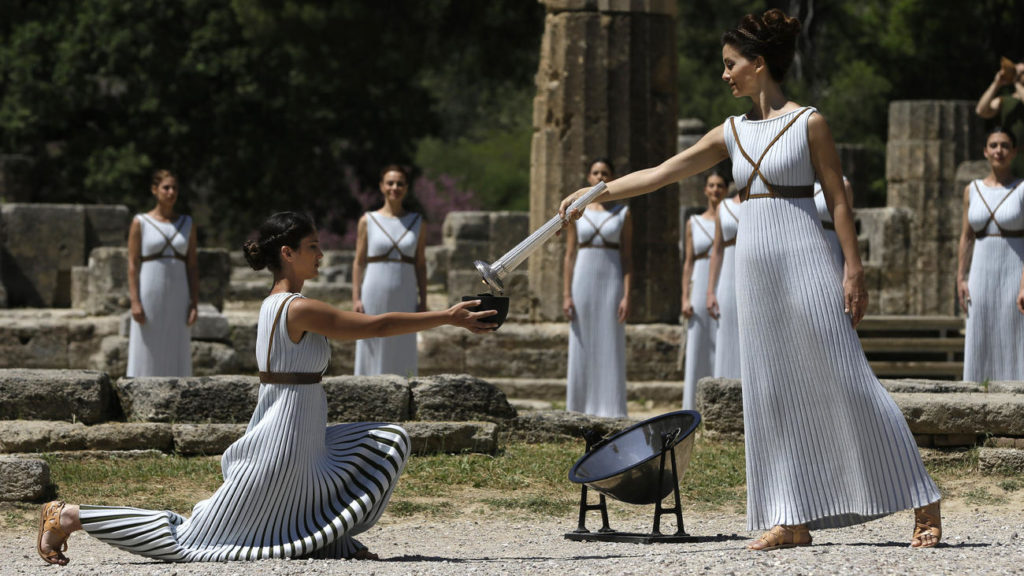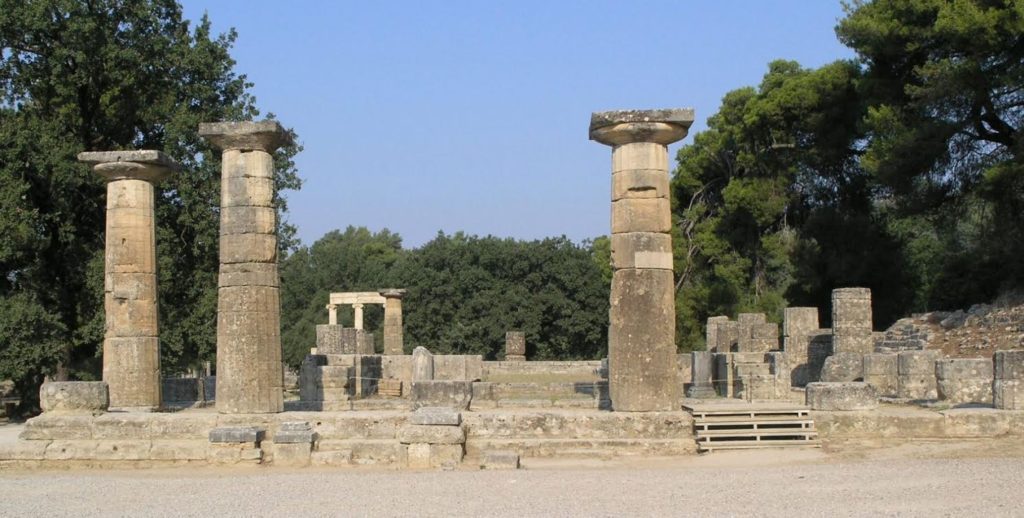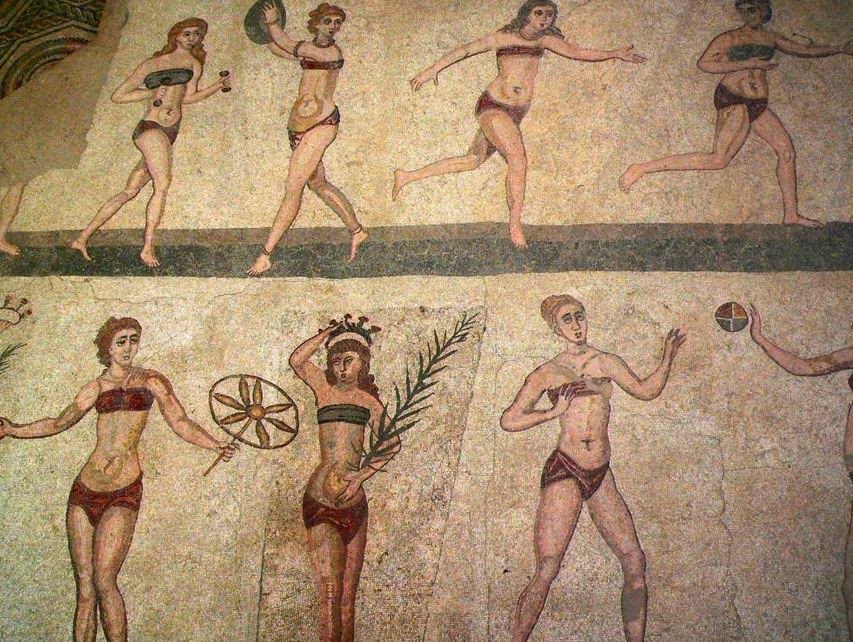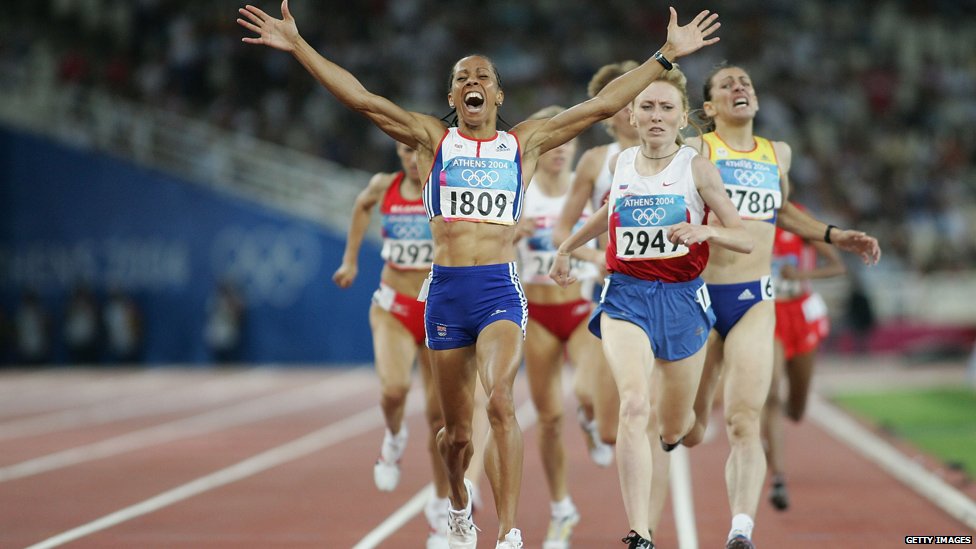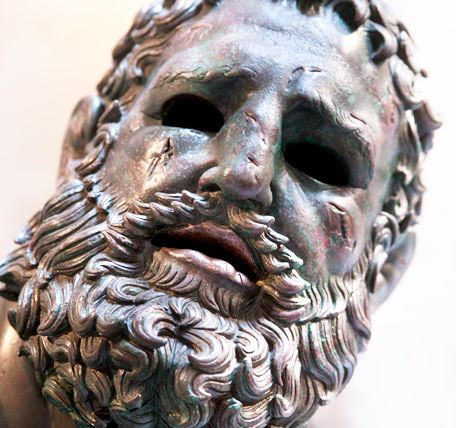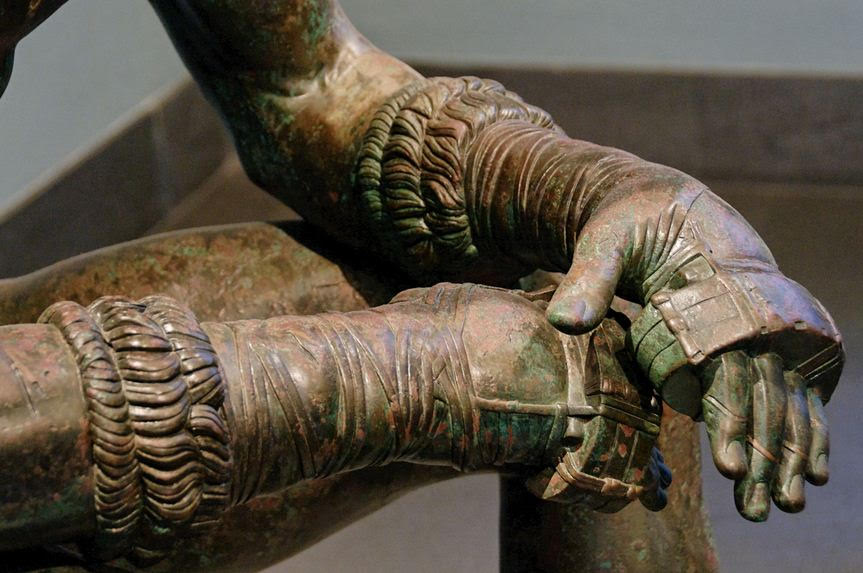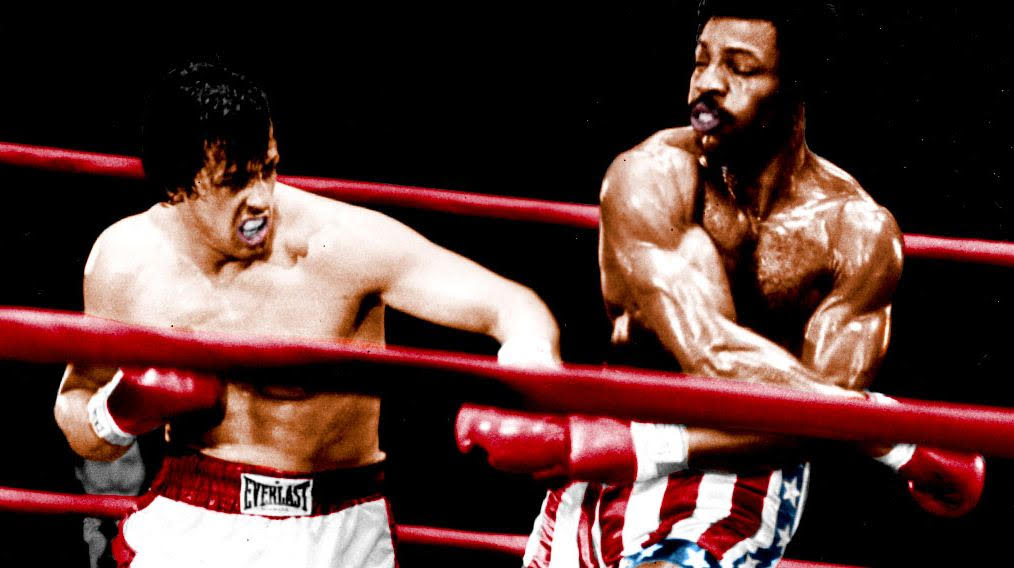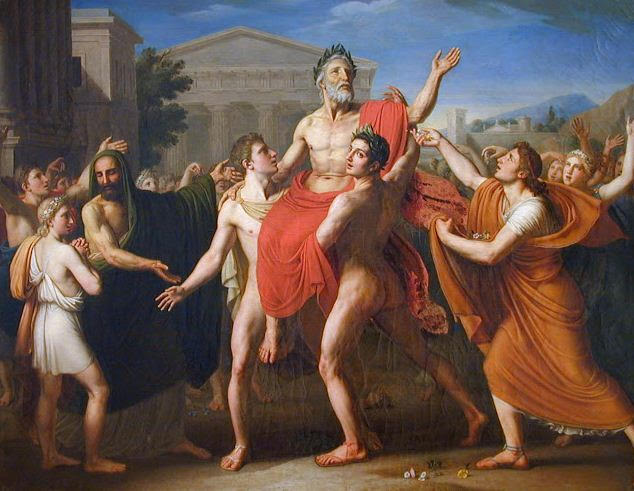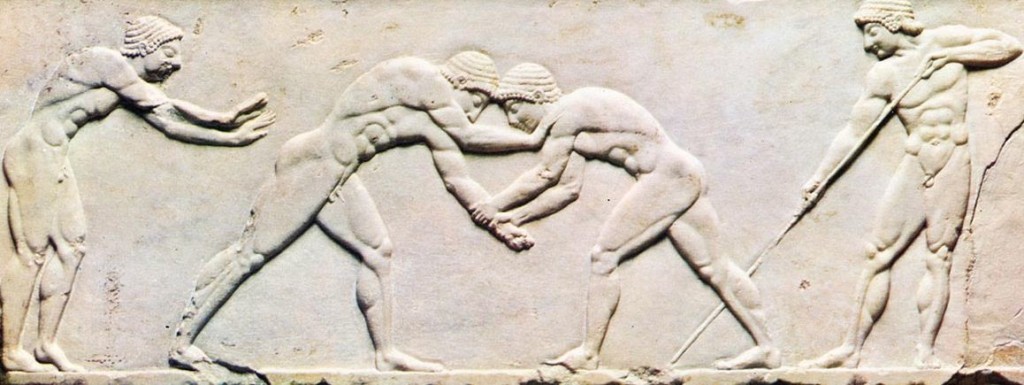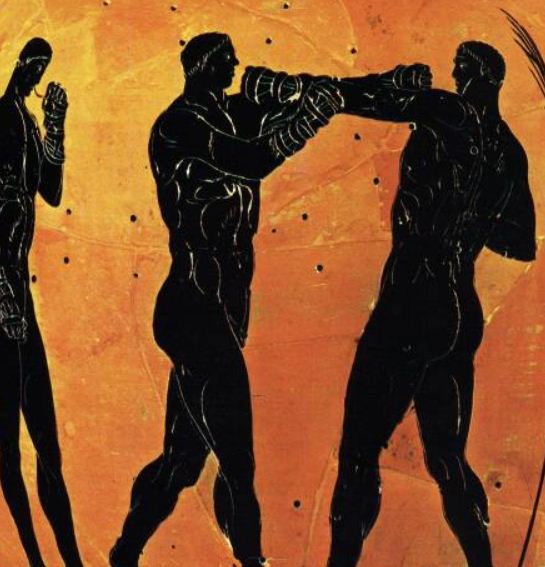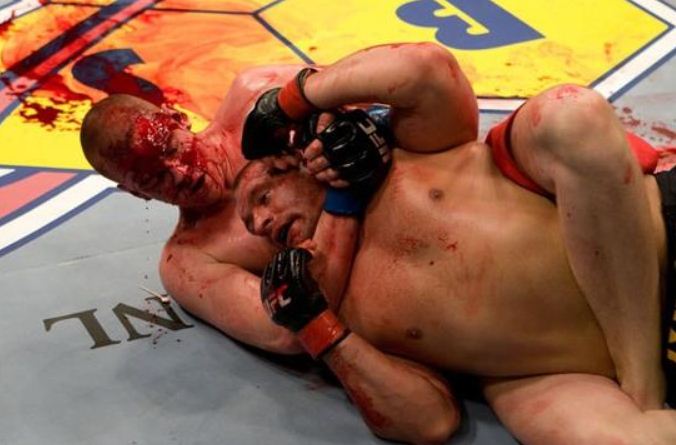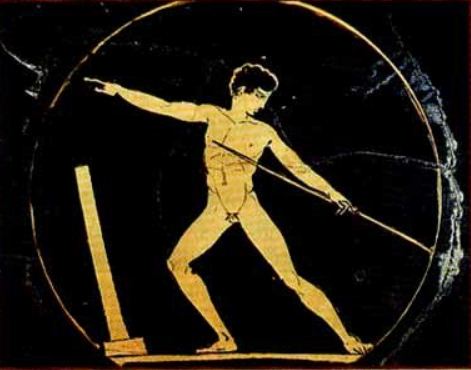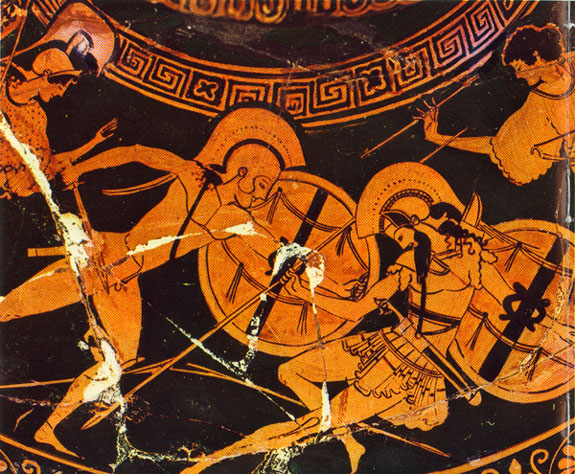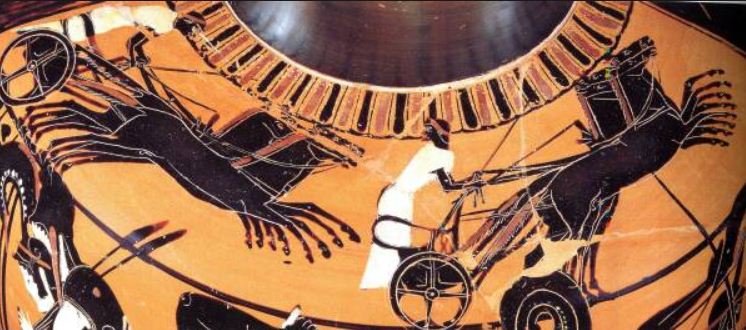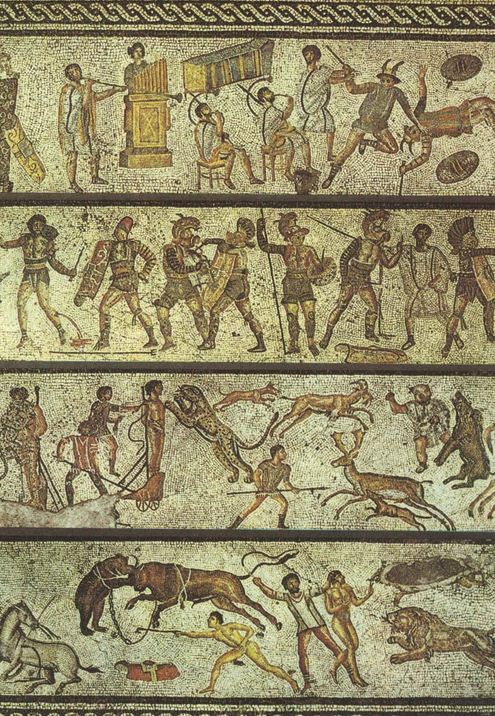The ancient Olympics took place where the rivers Kladeos and Alpheios met, on a lush green plain flanked by ancient hills.
There has been human activity, and worship of the gods here for ages, long before the Olympic Games, but the ancient Olympiad is the reason we know this sort of paradise.
At least that is what it feels like to me when I visit the site. To me, ancient Olympia is a place of peace, a place for thought and feeling where one can still hear the roar of the crowds and the chanting of priests in worship of Zeus, Hera and others.
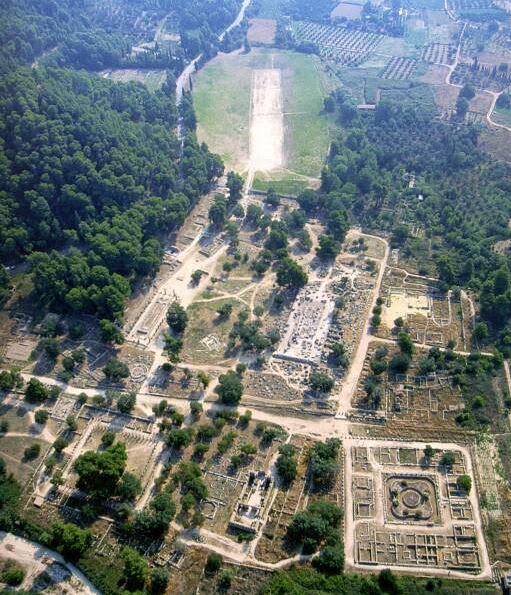
Ancient Olympia Aerial View
The site today is riddled with ruins, with column drums and statue bases surrounded by blooming flowers in spring, and dry grasses in high summer.
However, it is important to remember that ancient Olympia is a living entity. While it has been a sanctuary for ancient traditions from the days of Gods and Titans, it has also been a place of constant change.
One might even say that ancient Olympia was the Greek world in microcosm.
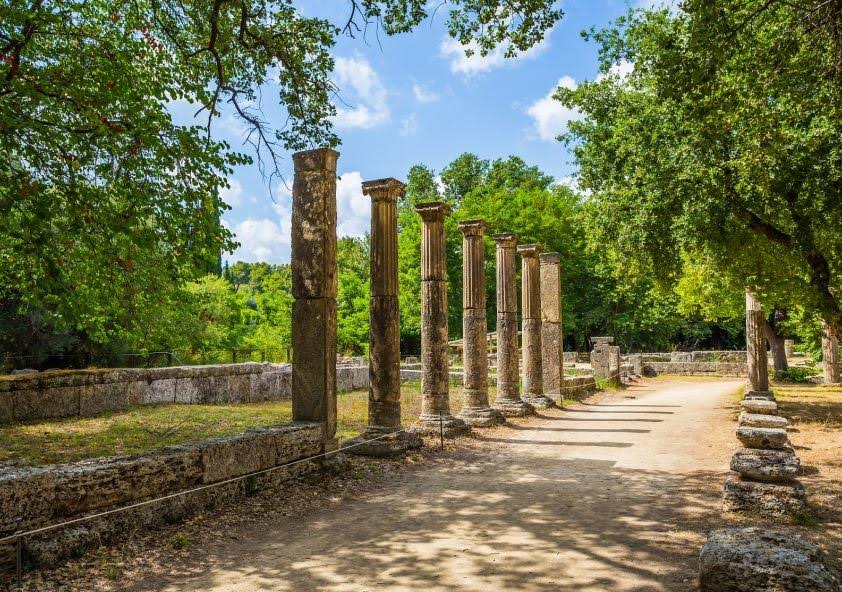
Columns of Palaestra
When one visits the site today, there are many remains of monuments and structures that were not there for the 396 B.C. Olympiad, when Heart of Fire takes place.
The remains of hostels, the south bath house, the Echo Colonnade running along the entire east side of the Altis, and the Exedra of Herodes Atticus were yet to be built. The area of the great gymnasium of Olympia, the massive square of the Leonidaion and its pool, or the round Tholos built by Philip and Alexander of Macedon, known as the Philippeion, were only thoughts in time.
Many of the monumental remains that we see so clearly today were simply not there in 396 B.C.
At the dawn of the fourth century, however, ancient Olympia was thriving. Though many future structures had yet to come into being, many had already been there for over a hundred years.
It goes without saying that the great stadium and hippodrome of Olympia existed in 396 B.C., as did the Archaic temples of Zeus and Hera in the Altis, the religious heart of the Olympic sanctuary, where much of Heart of Fire takes place.
In writing Heart of Fire, I wanted to make the setting for the story as accurate as possible for the time period, so it was important to weed out the Hellenistic and Roman additions to the sanctuary.
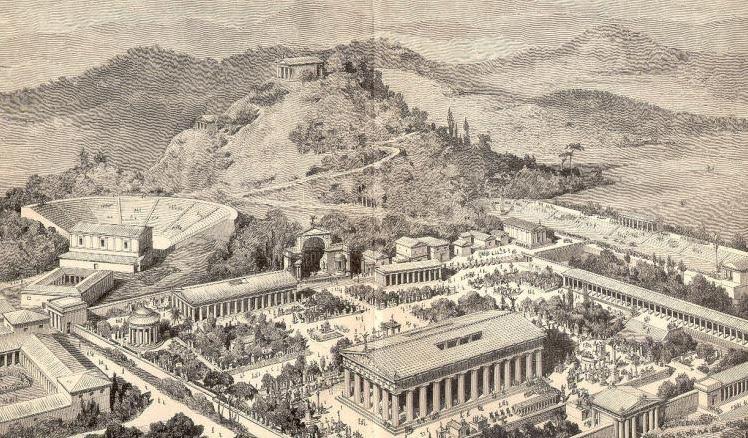
Artist impression of ancient Olympia – many of the buildings in this picture were not there in 396 B.C.
Today, we enter the sanctuary from the North, along the later gymnasium, but in the ancient world, the main entrance to the sanctuary was through the south stoa which faced the line of the Alpheios River.
Behind that was the Bouleuterion, the administrative and ceremonial offices of the Hellanodikai, the official judges of ancient Olympia. It was here that the athletes and coaches took their Olympic oath before a statue of Zeus Horkios (Zeus of Oaths), and sacrificed a wild boar.
All of the religious ceremonies at ancient Olympia were overseen by the Theokoloi, the priests of Olympia, who lived in the Theokoleon, which was located to the West of the Temple of Zeus and the sacred olive grove where crowns were cut. To the northwest of the Theokoleon were the ancient baths and a swimming pool, and to the South of the Theokoleon was the workshop of Pheidias, the sculptor who crafted the chryselephantine statue of Olympian Zeus, one of the Seven Wonders of the ancient world.
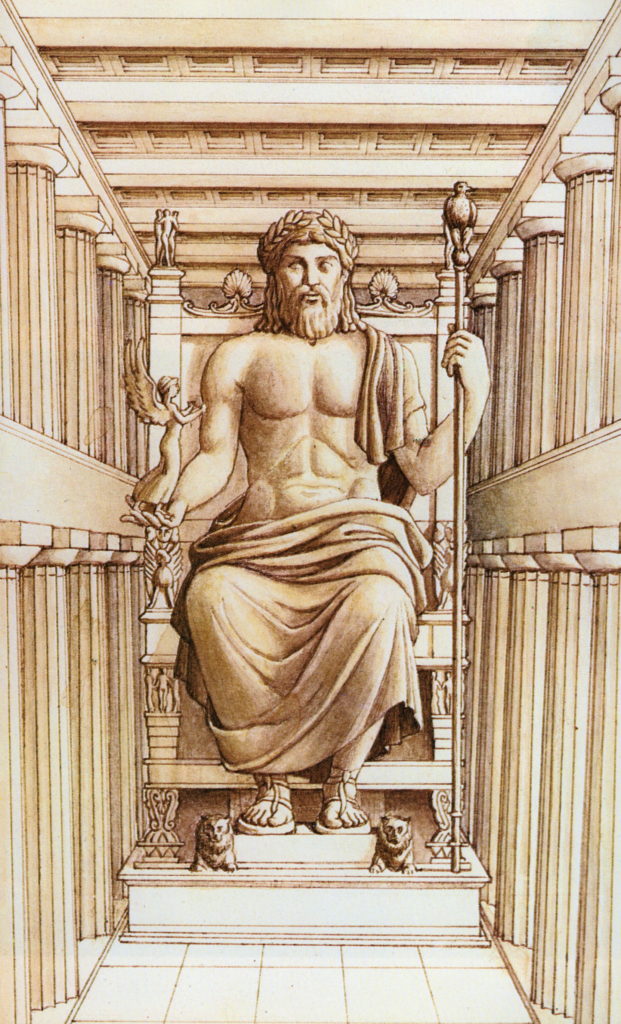
Statue of Zeus
Today, the remains of Pheidias’ workshop are well-intact. Beside this workshop was the house of the Phaidryntai, those whose sacred duty it was to maintain the statue of Zeus built by Pheidias.
The Altis was the inner sanctuary of ancient Olympia, the sacred heart of the place where the Temple of Zeus rose out of the ground, the pediments illustrating the race of Pelops and Oinomaus, and a battle between the Lapiths and Centaurs overseen by Apollo, the first legendary victor in the Games.
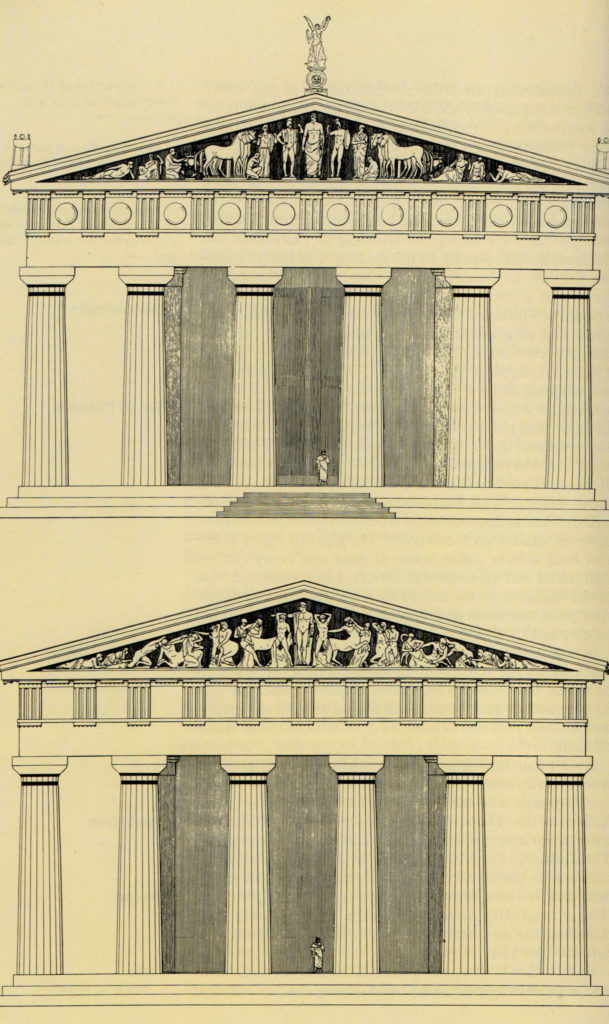
Pediments of the Temple of Zeus at Olympia
Located between the remains of the temples of Zeus and Hera was the Pelopion, the burial mound of the hero Pelops, which stood beside the Great Altar of Zeus, a cone-shaped mound that was built up over time with the bones and ashes of ages of offerings to the King of the Gods.
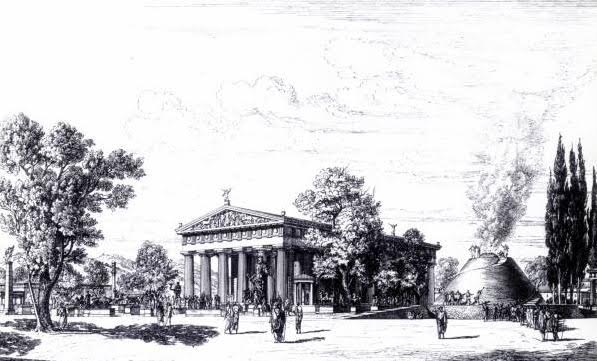
Illustration showing temple and great altar of Zeus
Overlooking the Altis was the Hill of Kronos, and at its base stood the treasuries of various city-states, structures shaped like small temples where offerings were made by those cities, and where citizens of those cities could stay or gather. Before these were the Zanes. These were the statues of Zeus made from fines levied upon those who committed sacrilege and broke the rules of Olympia.
At the northwest corner of the Altis was the Prytaneion. This was the place where the eternal Olympic flame burned at the altar of the Goddess Hestia, and where banquets were given to honour Olympic victors.
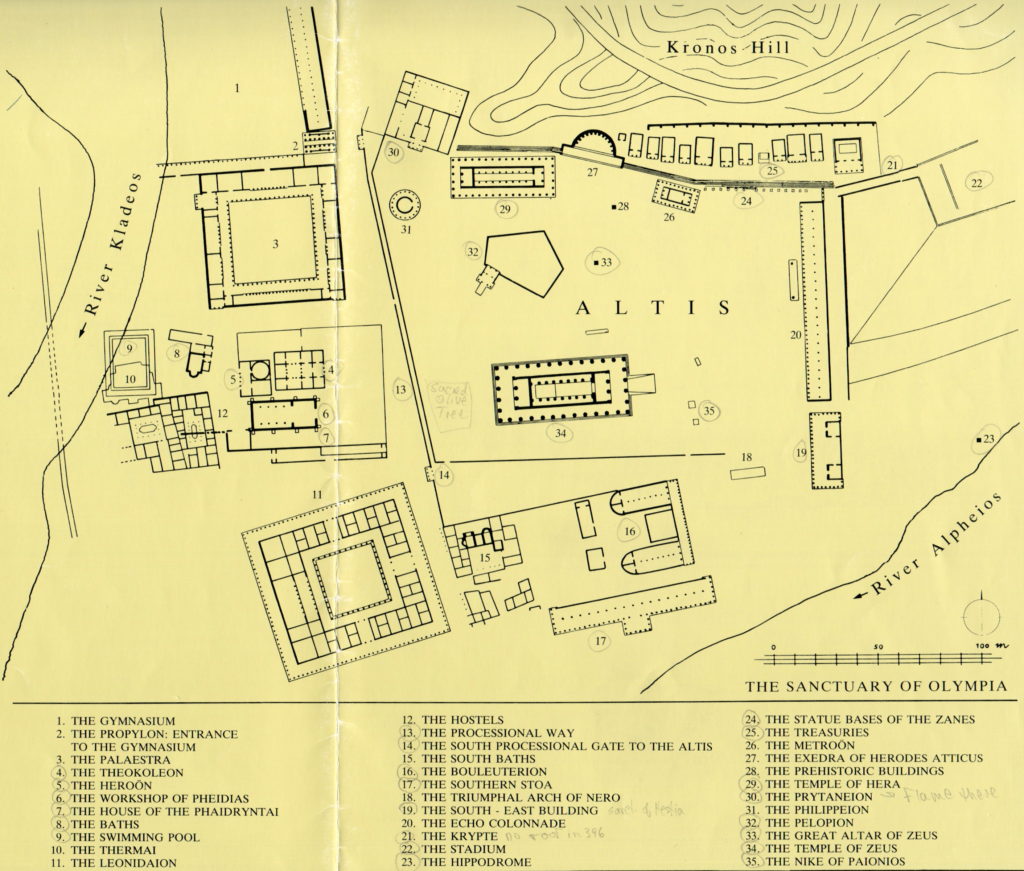
Olympia map my markings – the circles indicate structures that were there in 396 B.C.
As you can see, in 396 B.C. there were many buildings at ancient Olympia. The Altis would have been packed with epinikion statuary, bronze statues erected by Olympic victors as was their right, as well as sixty-nine altars where priests, attendees, and competitors honoured the gods.
After the temples of Zeus and Hera, which now dominate the Altis, most visitors today are drawn to the stadium which stretches out like a sleeping giant on the northeast side.
At one point in time, the vault of the Krypte, the tunnel leading to the stadium, was roofed, similarly so at Nemea. But in 396 B.C. there was no roof over the Krypte.
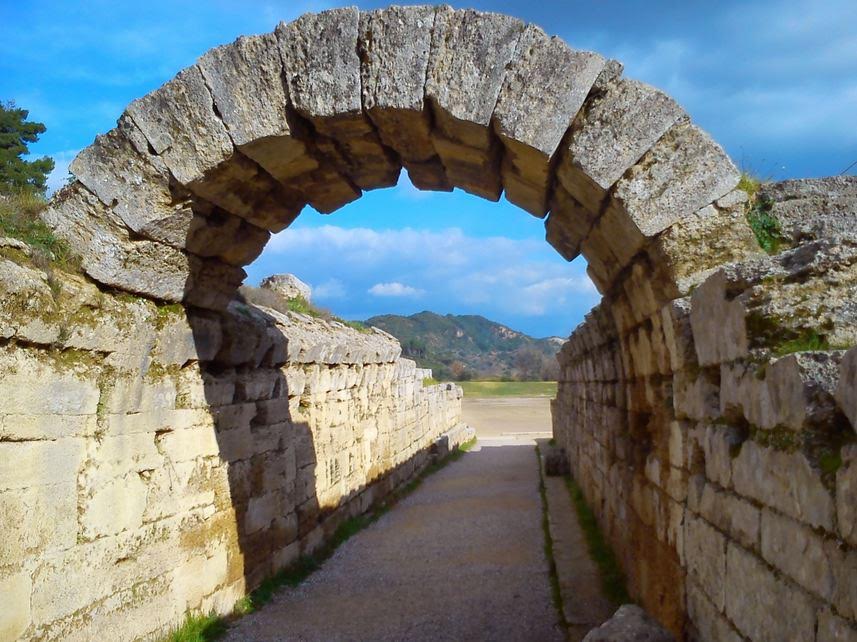
The Krypte which leads into the stadium
The length of an ancient Greek stade, the measurement that gives us the word ‘stadium’, was about two hundred meters. So, the stade race, the original Olympic sprint, was the two hundred meters.
When you step out of the Krypte and onto the dirt of the stadium, it’s quite awe-inspiring to stare down to the other end from the stone starting line which is still there. Through the heat haze you can just see the far end, and on either side the embankments, where over 40,000 Greeks watched the Olympiad, provide a smooth outline. In the middle of the embankment is the area where the Hellanodikai sat, as well as a spot of the Priestess of Demeter Chamayne, the only woman permitted to watch the Games.
It is easy to be tricked into thinking the scene in this serene setting was similar to what it was like in 396 B.C. But nothing could be further from the truth.
It would have been extremely noisy, and smelly with the stink of man-sweat everywhere. One might liken it to a football match today with the various city-state factions being seated together in different sections of the stadium.
Despite a reverence for the gods that most would have shared at Olympia, the Mastigophoroi, the whip-bearing police force of Olympia, must have been busy, especially during the games of 396 B.C. when everyone was still licking their wounds and nursing their bitterness after the Peloponnesian War.
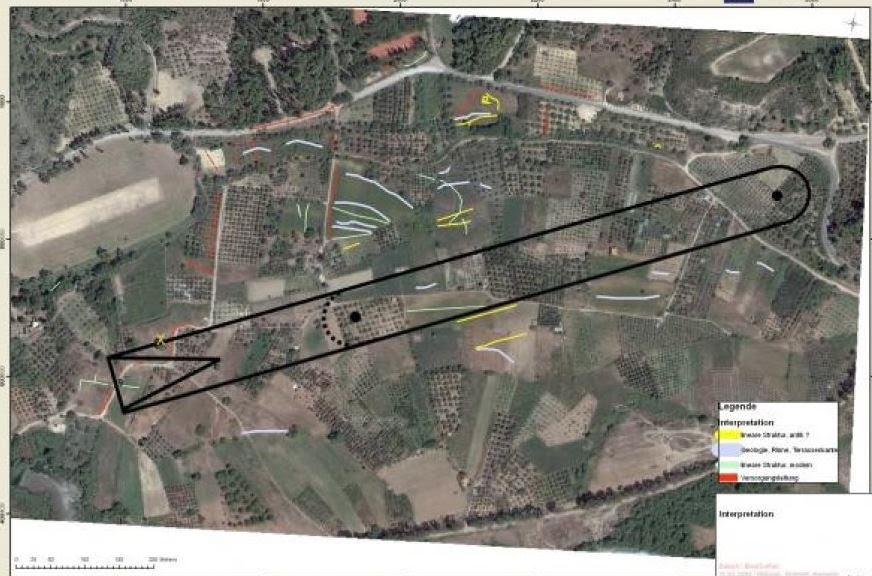
Olympia’s Hippodrome

